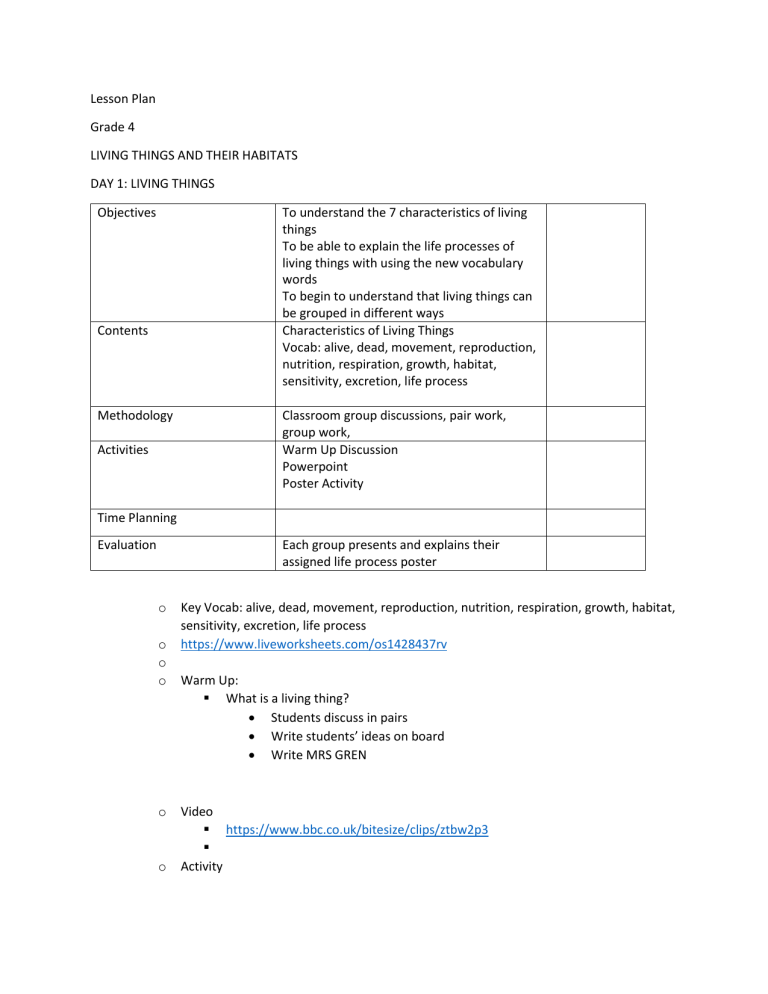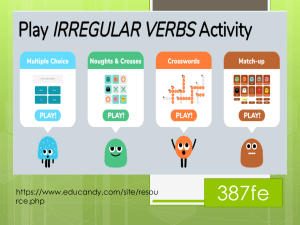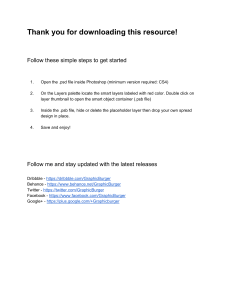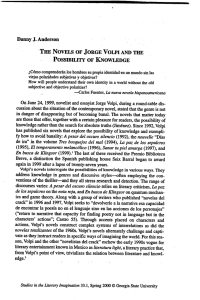
Lesson Plan Grade 4 LIVING THINGS AND THEIR HABITATS DAY 1: LIVING THINGS Objectives To understand the 7 characteristics of living things To be able to explain the life processes of living things with using the new vocabulary words To begin to understand that living things can be grouped in different ways Characteristics of Living Things Vocab: alive, dead, movement, reproduction, nutrition, respiration, growth, habitat, sensitivity, excretion, life process Contents Methodology Activities Classroom group discussions, pair work, group work, Warm Up Discussion Powerpoint Poster Activity Time Planning Evaluation Each group presents and explains their assigned life process poster o o o o o o Key Vocab: alive, dead, movement, reproduction, nutrition, respiration, growth, habitat, sensitivity, excretion, life process https://www.liveworksheets.com/os1428437rv Warm Up: What is a living thing? Students discuss in pairs Write students’ ideas on board Write MRS GREN Video https://www.bbc.co.uk/bitesize/clips/ztbw2p3 Activity o o Put students in 7 groups, each group will be tasked with creating a poster that explains one of the seven characteristics of living things Online resource for students: https://www.dkfindout.com/uk/animals-andnature/what-is-living-thing/ TEACHING GUIDE o Vocabulary Words: alive, dead, movement, reproduction, nutrition, respiration, growth, habitat, sensitivity, excretion, life process Warm Up/Class Discussion o MATERIAL: Powerpoint SLIDE 1: Introduce the question: What is a non-living thing? SLIDE 2: What are some examples of NONLIVING things? Ask students for examples. Write each example on the board with a quick drawing of the example. Slide 3: What is a living thing? Ask students what they think a living thing is and instruct them to discuss in pairs. After a few minutes, give each pair a chance to share their ideas. Write those ideas on the board. Slide 4: Life Process Read the definition of life process. Explain its significance when differentiating between a living and nonliving thing. Slide 5: MRS GREN Share the helpful way for the students to remember the life processes of living things: MRS GREN. Read what each letter stands for. o Movement o Respiration o Sensitivity o o o o Lecture o Growth Reproduction Excretion Nutrition Slide 6: Movement Both plants and animals move. Some animals move very slow, while some move very fast. Plants can grow in different directions and their flowers can open and close. Ask class a connection question: What animals do you know that move slow? What animals do you know that move fast? DAY 2 Habitat o o Information: https://s3.ap-south1.amazonaws.com/360degreedoc/institutes/caj/1/lms/onlinelearning/15859147369720654.pdf Warm Up/Discussion: What kinds of things do animals need to survive? Write “What Living Things Need” on Board o Students discuss in pairs o Write ideas on board o Food, water, shelter, air, place to raise young Explain definition of habitat https://www.youtube.com/watch?v=ZrSWYE37MJs Different habitats Ask students about the different types of habitats on earth (tundra, ocean, freshwater, desert, forest, grasslands/savanna) o Show a photo of each habitat and ask students what characteristics they see of each habitat Explain characteristics of each habitat o Forest o Large number of plants and trees o Variety of animals can live in caves, burrow, or on the forest floor Desert o Dry, sandy, hot during the day, cold during the night Tundra o Covered in snow and cold all year long Ocean o Saltwater o Largest habitat of the world Freshwater o Includes pond, lakes, streams, and rivers (Urban) Activity On board, draw four spaces for each habitat, pictures of different animals from all habitats Students decide and place which habitat each animal belongs in Explain why each animal would live and survive in their habitat o Example: ________ could live in the ______ because ________. Unit resource: https://www.sciencea-z.com/main/UnitResource/unit/25/life-science/grades-34/habitats-environment Reading worksheet https://www.educationworld.com/sites/default/files/Animal%20Homes-%20Science%203rdhandout.pdf biome vocab list https://www.enchantedlearning.com/wordlist/biomes.shtml https://homeschoolgiveaways.com/2017/10/learning-about-animal-homes-free-printables-andactivities/ grades 3 -5 video: https://www.pbslearningmedia.org/resource/nat15.sci.lisci.anihome/habitat-animalhomes/ work sheet https://view.officeapps.live.com/op/view.aspx?src=https://d43fweuh3sg51.cloudfront.net/med ia/media_files/Natures%20Homes.docx extra resources https://713d617c-307b-4620-8b395de1608ccee6.filesusr.com/ugd/fe60fb_642ad216949b40f68cc4d003f74c9c2b.pdf description of habitats worksheet https://713d617c-307b-4620-8b395de1608ccee6.filesusr.com/ugd/fe60fb_a0e9f0e43e7c43f08c0a6c36c292ed46.pdf o Lesson plan example: https://www.elementaryschoolscience.com/ecology-lesson-planhabitats






